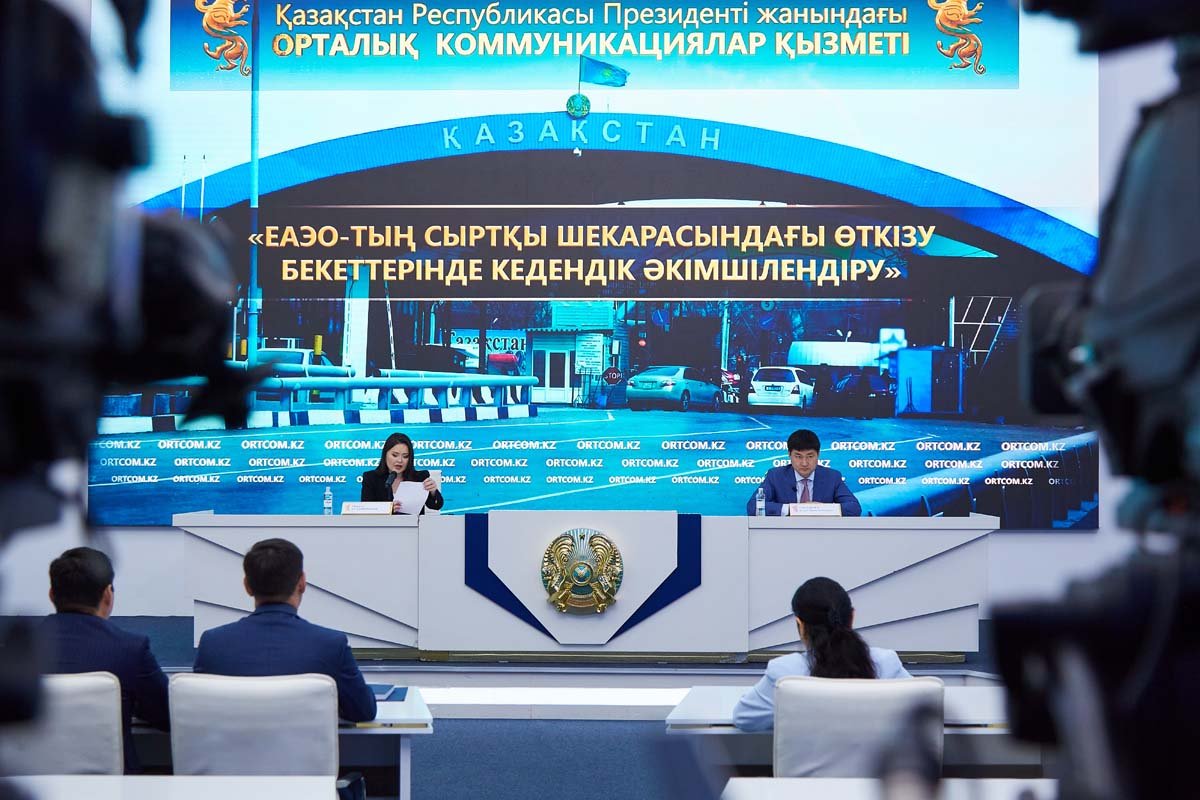ASTANA – An electronic queue system, introduced at the Kazakh border checkpoints, is streamlining and ensuring transparency in the movement of goods and transports, said Yeldos Saudabayev, director of the control department of the State Revenue Committee, at a July 26 Central Communications Service briefing on the customs administration and modernization of checkpoints.

Photo credit: Central Communications Service.
According to Saudabayev, the modernization of all the ten checkpoints located on the borders of the Eurasian Economic Union member-states made it possible to eliminate difficulties with queues, risk of corruption, and the need to wait in a live queue. This measure aims to increase the capacity of checkpoints eightfold with the passage of approximately 10,000 vehicles per day. The processing time will be reduced from two hours to 25 minutes, Saudabayev said.
“The modernization of checkpoints will solve infrastructure problems, create appropriate conditions for the comfortable passage of transport, and ensure accelerated control,” he said.
More than 27,000 people and approximately 90,000 vehicles have already used the electronic queue system.
Regarding transportation from China, Kazakhstan has launched a pilot project this year to automate issuing of electronic permit forms based on the CargoAlem electronic queue system module, which is designed to exclude human errors and corruption risks.
The Khorgos International Center for Border Cooperation, a joint project between Kazakhstan and China, resumed its work in April after several years of inactivity due to the Covid-19 pandemic.
Kazakhstan is taking steps to improve its transition capacity after the government called for measures to remove barriers.

